How To Origami — Goat Edition
February 8, 2022
This Week’s:
Historical Fact — Nobody actually knows when and where origami was invented; information about the craft prior to the 15th century is virtually nonexistent, and, due to paper’s degradable nature, no clues have been left behind. Many try to follow the trail of paper itself, believing that origami may have originated in China due to the fact that paper only spread to Japan after Buhhist monks brought it over. However, many others believe that the craft was made solely by the Japanese people. The only real concrete facts about the elusive subject are that paper was invented in China and spread, that origami was already well-established by the first time a recovered piece of art references it (1680), and that no records of it exist before 1600 (History of Origami).
Fun Fact — In Japan, origami has inspired buildings, food, art, fashion, and even architecture, leading to some unique and interesting results (Printworks).
Featured Origamist — Alice E. Gray (June 1914 – April 1994) was both an etymologist and an origamist. She was nicknamed “The Bug Lady” due to her creation of many models of different insects. However, she was most known for helping push origami in the spotlight, talking in museums, local schools, and even The Tonight Show. She later became one of the co-founders of the Friends of the Origami Center of America, now named OrigamiUSA (Gray).
Featured Work- The piece is not named; it is made by Eric Joisel, and is the third most recent photo under “gallery” on this website, where all his works have been archived and recorded.
Tip — Make sure to fold with clean hands: doing so helps the paper stay clean and prevents any possible stains (Tips For Folding…).
It’s kind of a weird thing to think about, but goats were actually one of the first animals to be tamed by humans. These furry creatures have been by humanity’s side for an estimated 10,000 years, so it would only be fitting for such a creature to make its way into the arts. Although this piece does not come from some ancient ruin, it does produce some great results — along with a really cute centerpiece. For this, origami paper and some scissors were used — origami paper is recommended, and can be found on places like Amazon or in some stores, but can also easily be made from regular paper with just scissors, if none is available. A warning, though: this piece, although cute, is fairly difficult, and may require a bit of practicing, folding, or even failed attempts first. For a smoother transition into more complicated folds like these, check out the first installment or the latest one. If anyone finds themselves frustrated, make sure to persevere — nobody is perfect, and hard work can lead to a great sense of accomplishment when finished. Speaking of finishing — it’s time to start!
The first thing to do it to divide the paper into thirds, hot-dog style, and creasing just the very edge of the paper.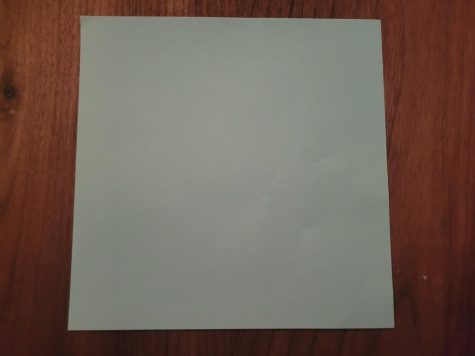
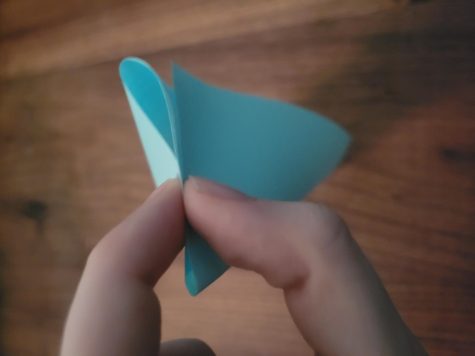
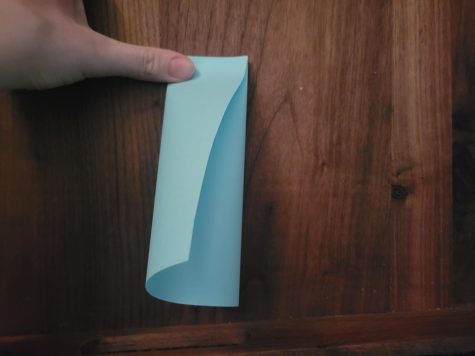
Once unfolded, the paper should be flat, but with 2 lines. Next, the paper should be folded on both diagonals, leaving one of the triangles with two lines. Proceed to make it so the paper looks like a kite, with the marks on the bottom left.
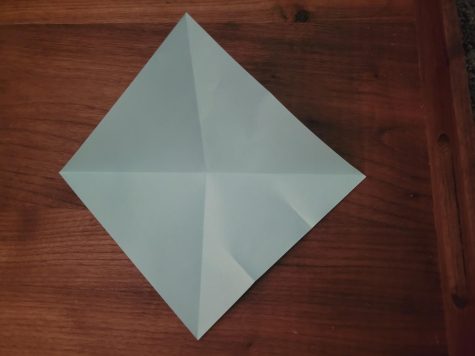
Then fold the bottom corner up, until it coincides with the first line exactly. After that, fold it up again to the second line, and do the same with the other half of the paper.
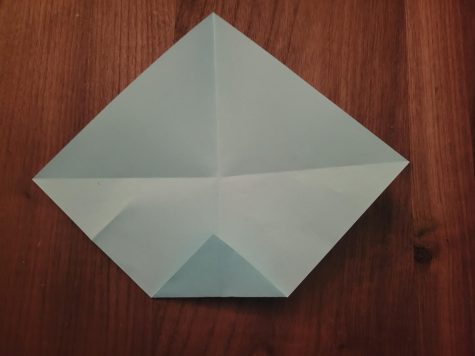

Then take the long hexagon and turn it so it is facing horizontally before folding the triangle on the left side as far up as it can go.
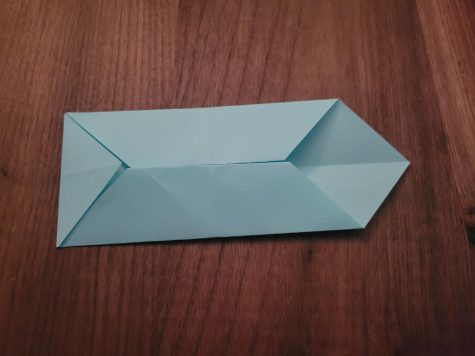
Next, turn the whole thing vertically again, with the left side on the top, and fold the left triangle the same way the right was. Then take this bottom triangle and fold it down until the edge is peeking out of the rectangle.
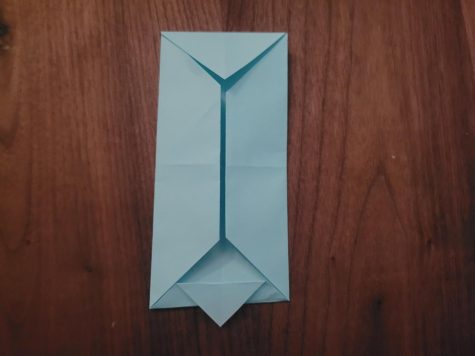
Then take the shape just folded and take the edge of one half and fold it down. Do the same with the other half — it should look like the photos below.
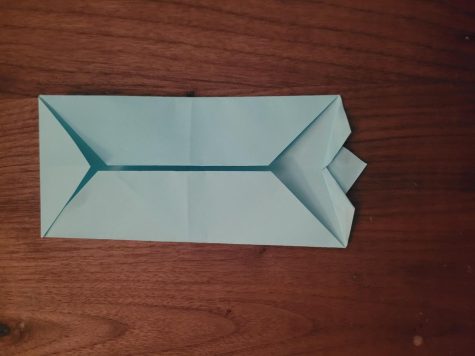
Next, open up the whole triangle and then proceed to take one half and fold it in. Do the same to the other half. Unfold, and then refold in such a way that it looks like it did after step four.
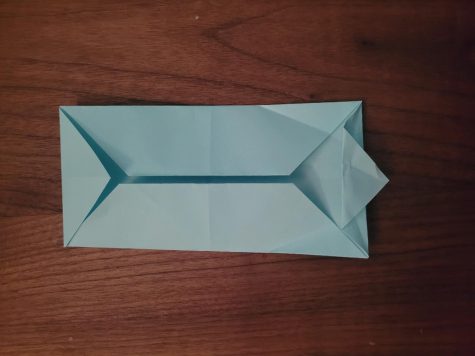

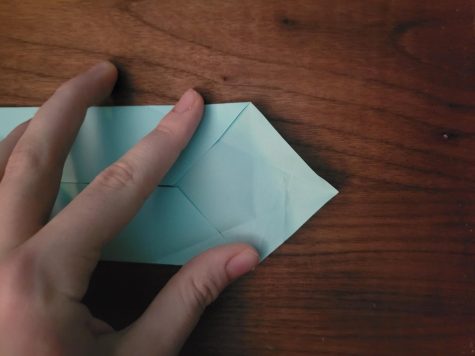
After that, place a finger on the halfway mark of the folded over triangle, and push out to open the half up. Push over, to the right for the left half or left for the right half, and down, creating something that should look similar to the photo below.
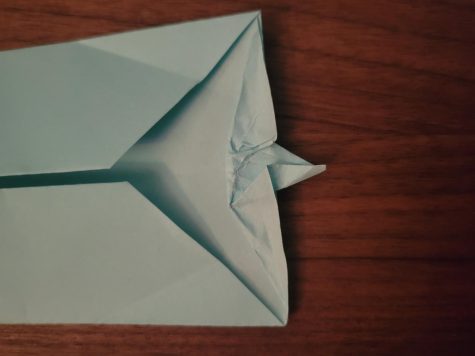
Proceed to take this whole thing and turn it to its side once again. Next, fold the side that was being worked on and fold it up to the halfway point, cutting the segment into thirds. Proceed to fold the top down to the fold just made, so that there are now four segments to the half.
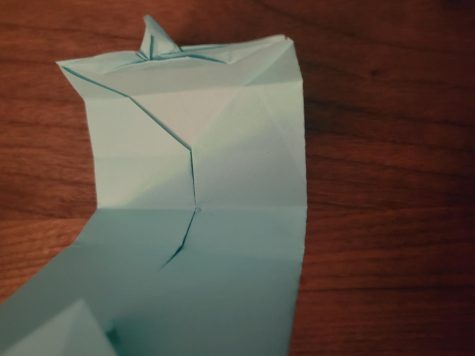

Flip the whole thing over then, and make it so that the middle two parts of the four are out and the outer two parts are folded in, leaving a sort of rectangle that is slightly raised above the rest of the paper.
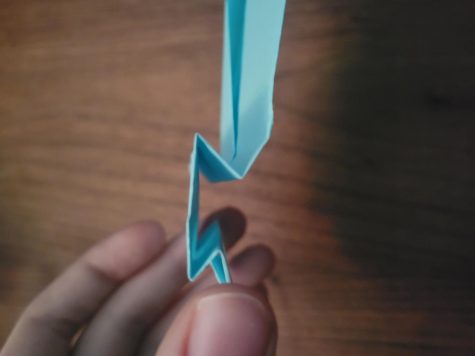
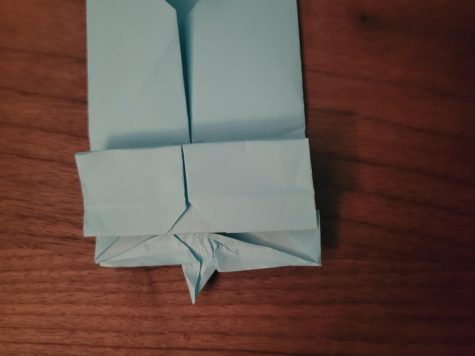
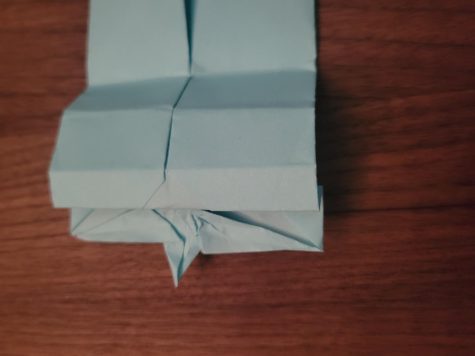
After that, flip to the other half of the rectangle. Treat this like a regular piece of origami paper, and fold the diagonals of the square. Proceed to fold the square in half, then unfold.
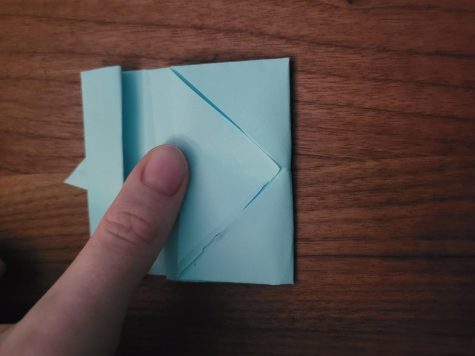

After unfolding the square, take the two middle triangles in the square and pinch them together, folding up and flattening out the newly formed tiny triangle.
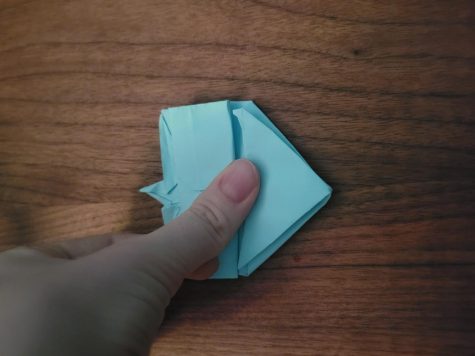
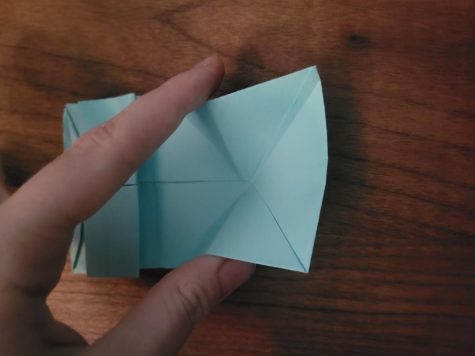
Than take the point of the triangle, fold it up to the edge on both sides, and unfold the whole thing until is it a square again.
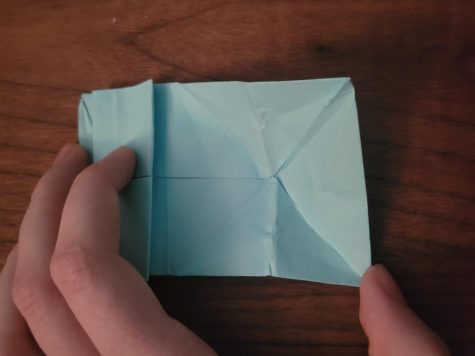

Next go back up to the top, with the tiny point. Holding it horizontally, take one half of the tiny rectangle, up to where it folds back into the regular paper again, and take it up to the midway fold. Crease, but just that part, not the rest of the paper.

Proceed to then hold down where the newly made crease is, and open up the flaps, before pushing down and out on them until the top flap goes down over the smaller flaps. Do the same with the other side, until left with identical halves.
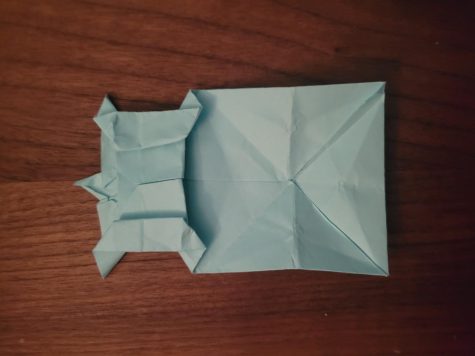
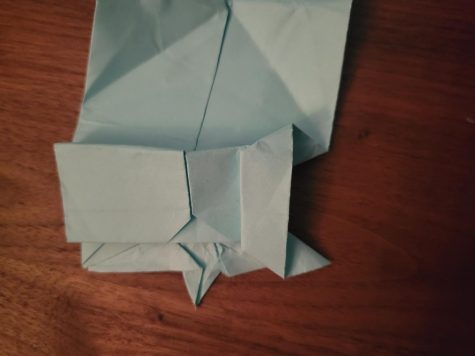
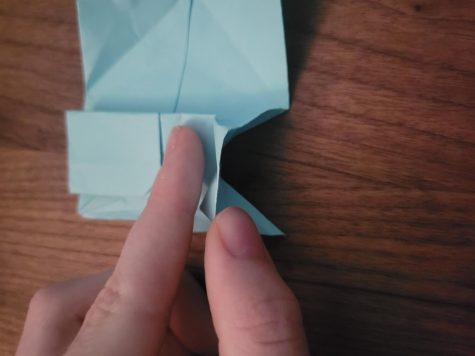
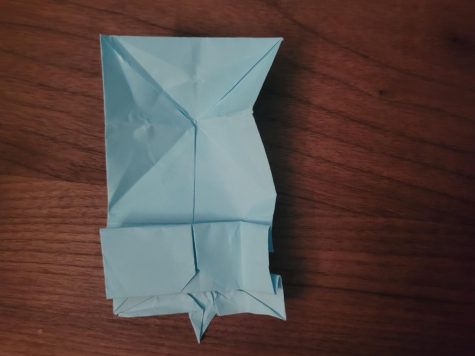
Then flip it all over. After flipped, take the whole piece and use the line going down the middle to crease it in half. Congrats — these are the legs and an unformed head.
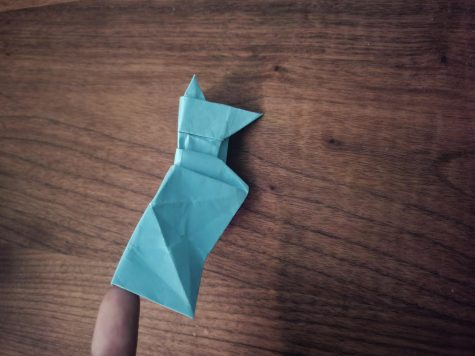
This step is optional, but, for a neater look, open up the bottom — there should be two flaps on either side that just stick out. Fold those both down, into the interior, for a more normal looking animal.


Proceed to then flip the thing right side up again and focus on the head. Right at the top, there should be a prominent crease, the second lowest on the head. Take the highest point and push it down, folding it down into the interior so that that crease is now the highest point.
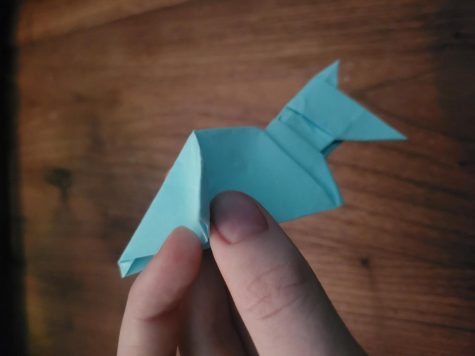
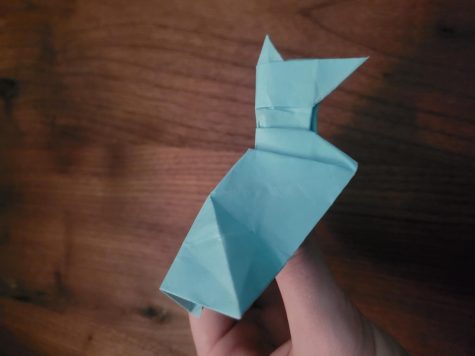
After folding it down, pin down at a semi-low point on the paper and fold half of it back (there may be some resistance) until it looks like a kite. Then fold the second half back, so that both halves are pointing to the back of it.


Proceed to unfold, and then take the whole head, down to the legs on both sides, and fold it back like before. After this, make a small, angled crease about midway on the large triangle. Fold it down until the angle looks right for a head. While doing so, make sure that the pointed beard is sticking out — a good way to help this is by folding in a small flap already creased on the bottom of the head.
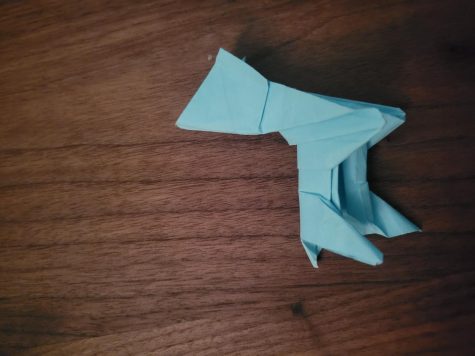

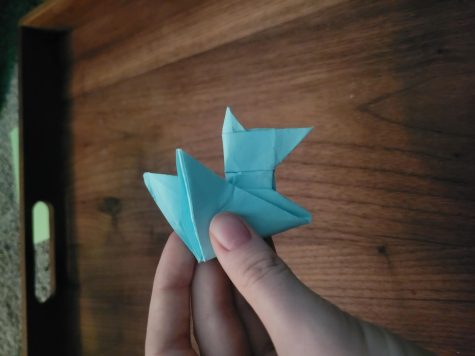
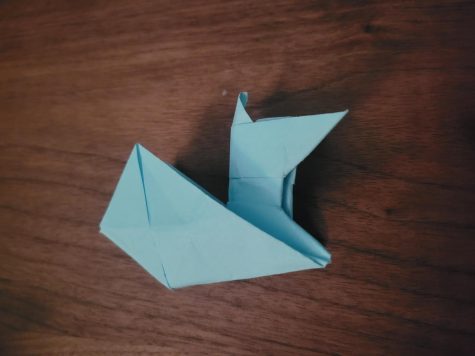
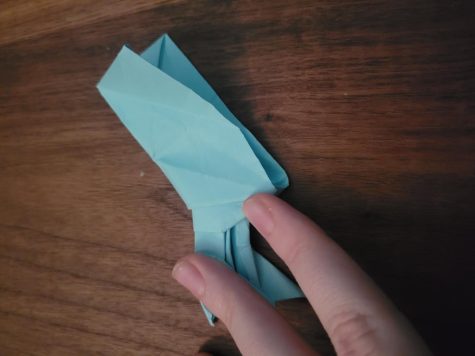
Then take the long point at the top of the head and fold it in, so that the point is in the middle of the head and smaller.

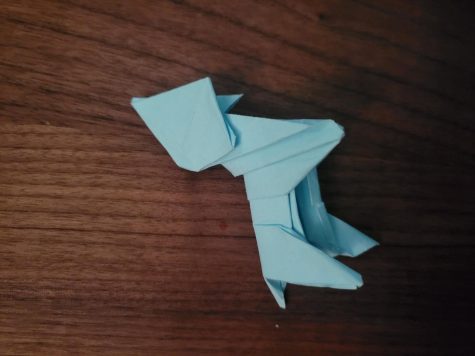
And, finally, decorate. This goat, although complicated, is hornless and earless, but changing that is easy. For the horns, just fold the paper in half, cut it, and stick them in the folds. For the ears, take a corner, and start folding it like a horn — bringing the point to one side, unfolding it, and then doing the other, then holding the points and folding the very top in. After that, just fold in half and cut at the desired length, also sticking it in the many interior flaps of the head. There are any number of ways to alter it, though — go crazy!


This goat is a great desk piece or just a fun project for anyone, and, although it’s hard, it is definitely worth it for the cute result in the end. I hope that today’s tutorial was enjoyable, and that success in any future origami endeavors is found. Tune in for the next tutorial to find out how to make an origami cat.
Today’s tutorial (although altered for the head) was originally made on Youtube, 2017, by Taivin’s Origami Instructions. Click here for the original video.


Barry • May 12, 2023 at 6:07 PM
i couldn’t really understand this so it would be easier if there were a video